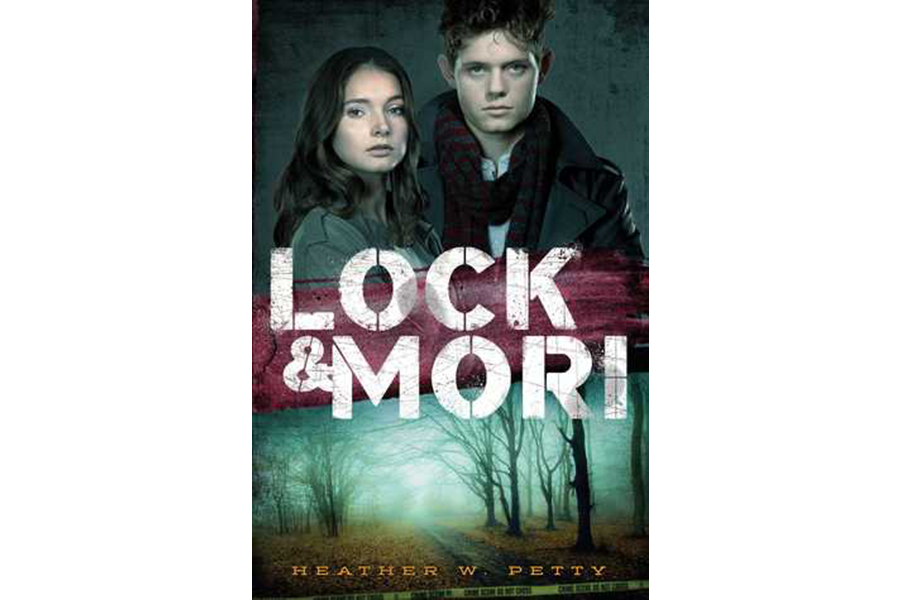'Lock & Mori' reworks Sherlock Holmes in a witty YA reimagining
Loading...
Stick a fork in me, folks – I’m done. I just read an outstanding young adult novel that eschews dystopia, vampires, zombies, and use of the acronym YOLO.
And it’s a witty Sherlock Holmes retelling.
And it's just the series opener.
And it's the debut book from this author, Heather W. Petty.
Reader, I devoured it.
This isn’t the Holmes you’ve met before. This Sherlock is not the smartest in the world. He is not the most logical. He is not the hero. (Steady, chaps.)
He can’t hold that title because the hero of Lock & Mori is the peerless, the brilliant Miss James Moriarty, a.k.a. “Mori.” And you will love her forever.
Mori is struggling to survive an annus horribilis. Her mother just lost a battle with cancer. Her best friend drifted away without so much as a text. Her father, an already-volatile London policeman, has dissolved into an unhinged, abusive husk. He crawls out of the bourbon bottle only to curse Mori, blame her for her mother’s death, and slug her as she shields her three young brothers.
Yet in these ugly circumstances, Mori keeps calm and carries on. She looks after her brothers, who turn to her for parenting and protection. She makes solid grades in school. She knows London like the back of her hand. Meanwhile, her public armor of standoffish sarcasm holds strong.
When she falls in with the eccentric Sherlock (a.k.a. Lock), whose mother is gravely ill, they bond over their grief and brilliance. One evening Lock drags her to a crime scene in Regent’s Park for intellectual calisthenics, where they discover that the victim is a classmate’s father.
As they dig deeper into an ever gnarlier pattern of murders, Mori and Lock develop a quirky and poignant relationship. The evidence they uncover will force Mori to face facts about herself and those she loves.
Petty unpacks Mori’s thought process at the crime scene by fusing Mori’s love of mathematics with her yen for clarity. It’s fantastically visual while 100% analytical:
“I knew nothing about solving crimes. I’d only ever associated that kind of work with my father, and we had never really gotten on, even before he became ... this. But perhaps there wasn’t any real trick to it after all. I supposed solving one thing was nearly like solving another. And if there was one thing I was good at, it was solving for X.
I decided to think of the crime as the steps in an equation.... Equations were easy. Put a pin into each of the things you know and then write the rules between the pins, like strings, connecting one pin to the next until you can solve for the missing parts.”
This is a gifted student with an eidetic memory to boot; she calculates complex probabilities as a mental escape from the daily drudge of high school. It’s exciting to inhabit her mind.
For readers who question her choice of a female Moriarty, Petty slips in a preemptive strike. When Sherlock expresses surprise at a girl being named James, Mori retorts, “Really? Sherlock wishes to discuss odd names with me?”
Sherlock’s dry response: “And a point to Miss Moriarty.” When he mentions later that his brother’s name is Mycroft, Mori can’t help but exclaim, “Did your mother despise you both from birth? Honestly.” Their quick, clever banter goes down like the fizziest soda.
Each incarnation of the classic British detective (and there have been many) is unique in both characterization and setting, and everyone has a different favorite.
Film buffs love the urbane Basil Rathbone, whose 1940s adaptation was timeless, erudite, and magnificent. The 1980s brought us Jeremy Brett in all his frenetic candor. In 2009 we met the bratty rapscallion Holmes of Robert Downey, Jr. Most recently we fell for the elegant and infuriating portrayal by Benedict Cumberbatch.
This comes amid a zeitgeist for hyperbrilliance, in which neurotic savants finally get their day in the sun. Consider the affection on display today for oddball brainiacs – people can’t get enough of Sheldon Cooper from “The Big Bang Theory,” Cumberbatch’s Sherlock, Hugh Laurie in “House,” even Ken Jennings of “Jeopardy!” fame. Sometimes the hottest viral video is a 10-minute TED talk!
It echoes the ardor we feel for modern tech giants like Elon Musk, Steve Jobs, Bill Gates, Richard Branson, et al., and inventors like Benjamin Franklin, Nikola Tesla, and Thomas Edison. They're all peculiar in their own way, but they’re responsible for orbit-altering developments straight out of science fiction. We respect the heck out of them and are lucky to live in their world.
“Lock & Mori” adds a new layer to Arthur Conan Doyle’s pantheon: two brainy, tender-hearted kids attempting to protect each other from dangers beyond their ken. Almost all the usual suspects make an appearance: Moriarty, Sherlock, Mycroft, John Watson, even Mrs. Hudson. There’s no Inspector Lestrade, no Irene Adler, and no Toby, but catch the pipe reference if you can.
True to canon, this sleuthing tale is rife with intrigues, puzzles, and vivid danger. Read at your own peril – nothing is more electrifying than the hunt for truth.






